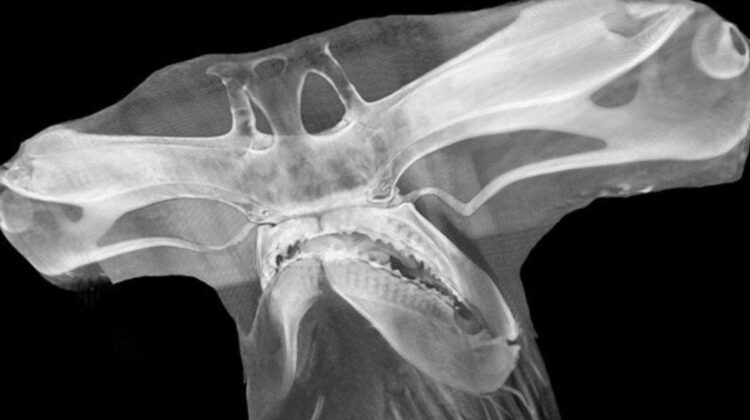
Advances in technology have revolutionized our ability to study and understand the natural world. One such tool is the CT scanner, which can image radio-dense tissue at resolutions as fine as 5 microns. This technology has now been put to use in a unique project called #scanAllFish, which aims to CT-scan every species of fish and make the data available for free online.
The project is made possible by the Karel F. Liem Bio-Imaging Center, which houses a micro-source CT scanner from Bruker, a model 1173. This powerful machine can image specimens up to the size of two grapefruits, and has been used to scan over 1,200 species of fish so far. The project aims to democratize access to CT data and ensure that having a scanner is not a competitive advantage in the field of vertebrate comparative morphology.

Scientists from all over the country have taken advantage of the offer to use the scanner free of charge, bringing with them lots of specimens and a small team to spend an intensive few days or weeks scanning everything they are interested in. The resulting data has been used for a variety of research projects, including studies of weakly electric fish from the Amazon basin and an adaptive radiation in barbs, a group of freshwater fishes.
For Kory Evans-Jackson, a Ph.D. student at Louisiana State University, the scanner was used to collect three-dimensional data on the skulls of South American electric fishes. This data was used to study developmental shape change between sexually-dimorphic males and females in one species of a Panamanian electric fish, which will help elucidate evolutionary and developmental processes that structure the diversity of biological forms observed today.

Malorie Hayes, a Ph.D. candidate at Auburn University, used the scanner to study the taxonomy of African barbs. With estimates ranging from 250-600 member species, this group has long been problematic for taxonomists due to convergent morphology and a lack of genetic data. The CT scans provided valuable insights into the internal structures of these fish, which will aid in their identification and classification.

Overall, the #scanAllFish project represents a significant step forward in our ability to study and understand the incredible diversity of life on our planet. By making CT data freely available online, researchers from around the world can contribute to our collective knowledge and advance our understanding of the natural world.

Leave a Reply